
On this day, in a last-ditch effort to deploy their remaining V-2 missiles against the Allies, the Germans launch their long-range rockets from their only remaining launch site, in the Netherlands. Almost 200 civilians in England and Belgium were added to the V-2 casualty toll.
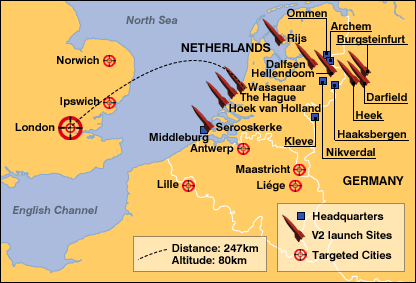





German scientists had been working on the development of a long-range missile since the 1930s. In October 3, 1942, victory was achieved with the successful trial launch of the V-2, a 12-ton rocket capable of carrying a one-ton warhead. The missile, fired from Peenemunde, an island off Germany's Baltic coast, traveled 118 miles in that first test.

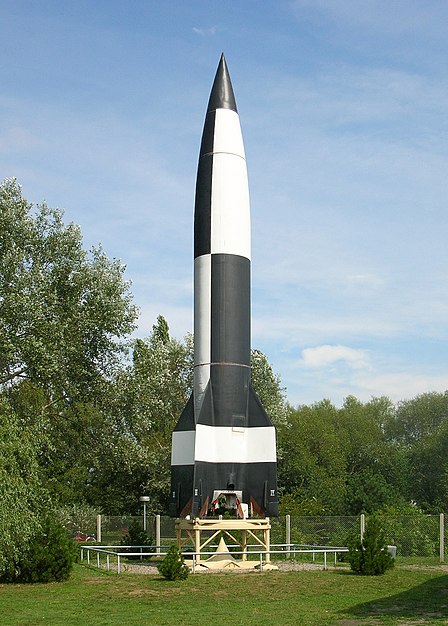
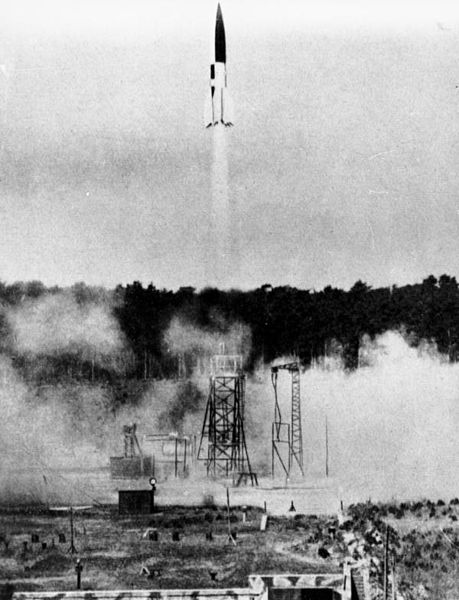
The brainchild of rocket scientist Wernher von Braun, the V-2 was unique in several ways. First, it was virtually impossible to intercept. Upon launching, the missile rises six miles vertically; it then proceeds on an arced course, cutting off its own fuel according to the range desired.

The missile then tips over and falls on its target at a speed of almost 4,000 mph. It hits with such force that the missile burrows itself into the ground several feet before exploding. The V-2 had the potential of flying a distance of 200 miles, and the launch pads were portable, making them impossible to detect before firing.




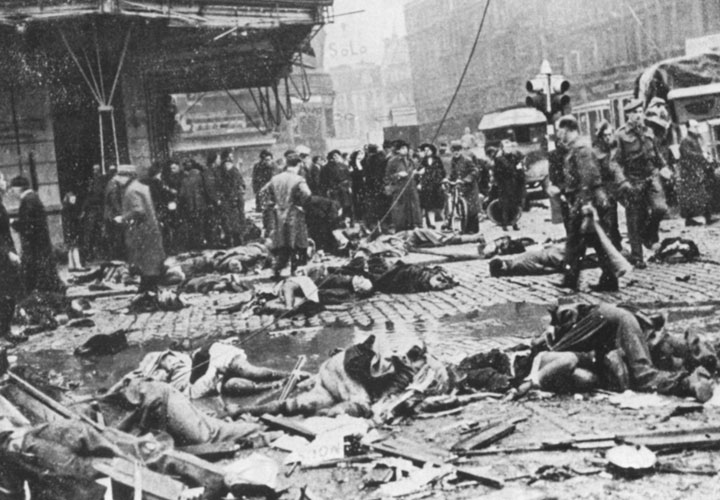
The first launches as part of an offensive occurred on September 6, 1944, when two missiles were fired at Paris. On September 8, two more were fired at England, which would be followed by over 1,100 more during the next six months. On March 27, 1945, taking advantage of their one remaining V-2 launch site, near The Hague, the Germans fired their V-2s for the last time. At 7 a.m., London awoke to a blast-one of the bombs had landed on a block of flats at Valance Road, killing 134 people. Twenty-seven Belgian civilians were killed in Antwerp when another of the rockets landed there. And that afternoon, one more V-2 landed in Kent, England, causing the very last British civilian casualty of the war.
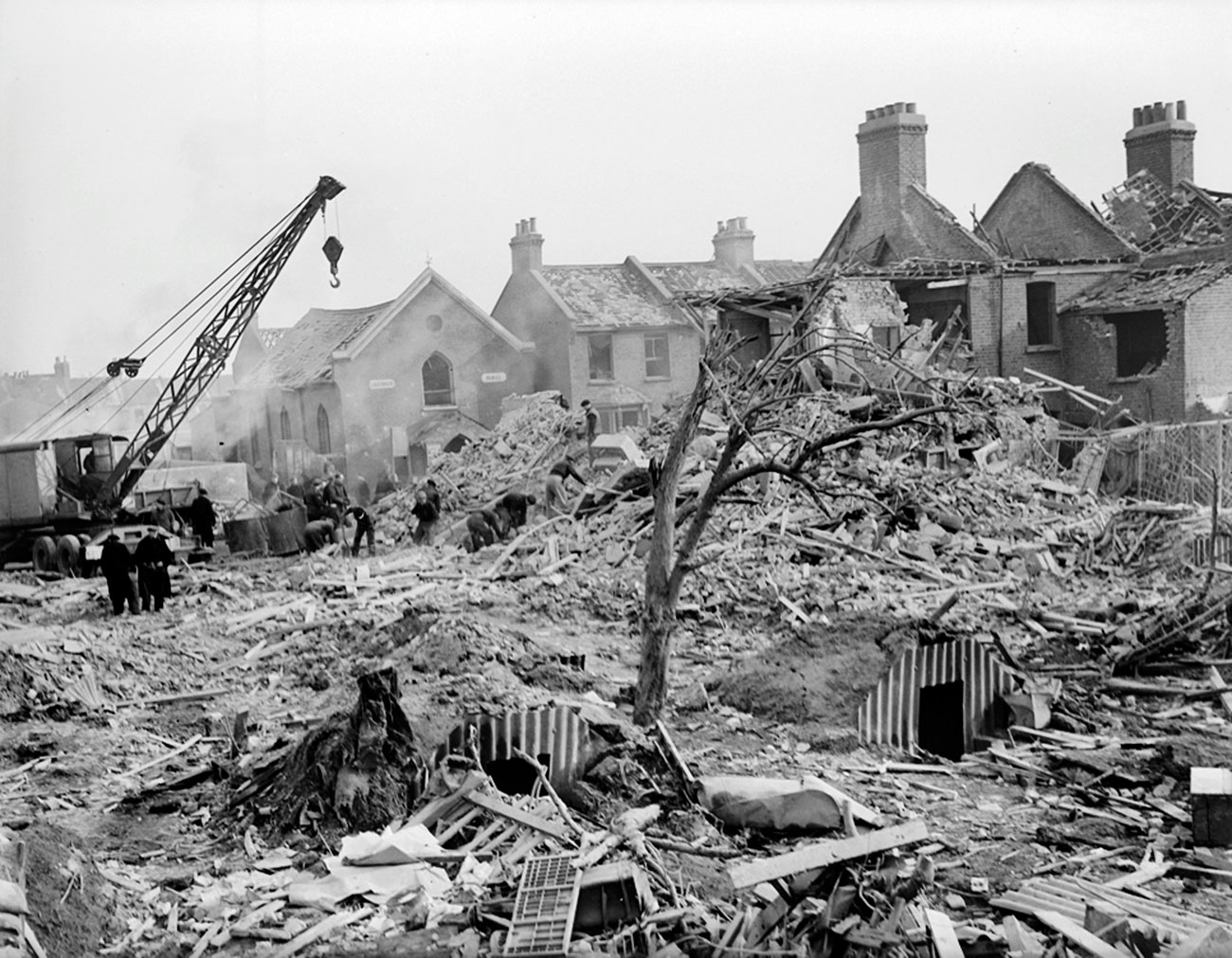



By the end of the war, more than 2,700 Brits had died because of the rocket attacks, as well as another 4,483 deaths in Belgium. After the war, both the United States and the Soviet Union captured samples of the rockets for reproduction. Having proved so extraordinarily deadly during the war, the V-2 became the precursor of the Intercontinental Ballistic Missiles (ICBM) of the postwar era.

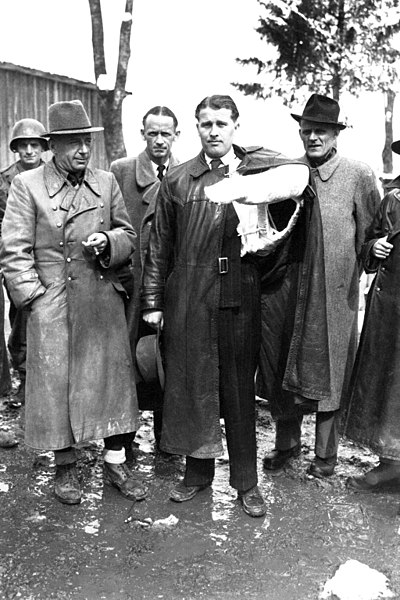

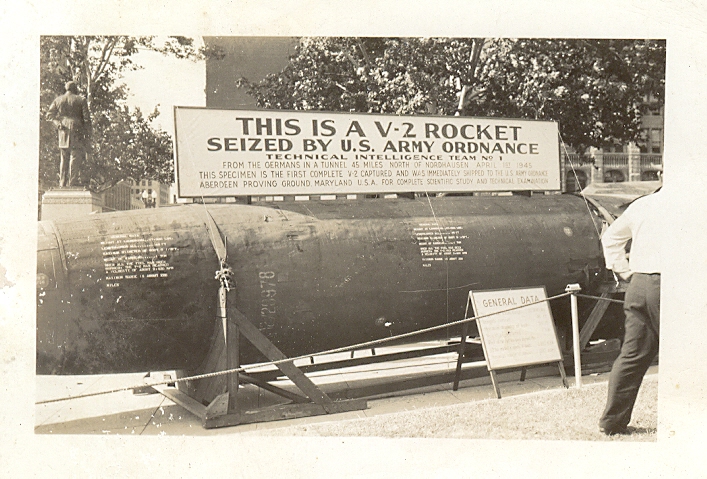



Taken from: http://www.history.com/this-day-in-history/germans-launch-last-of-their-v-2s [27.03.2014]

No comments:
Post a Comment